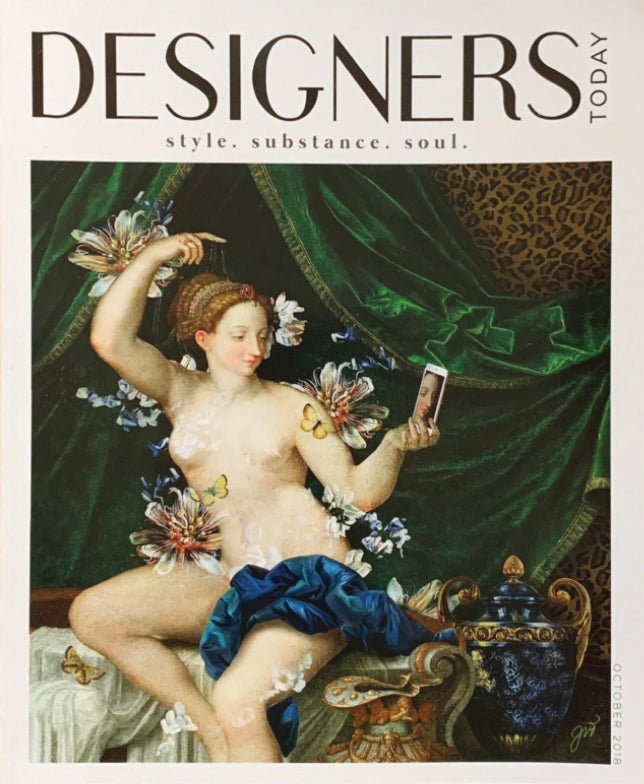How To Apply Peel and Stick Wallpaper
Peel and stick wallpaper has come a long way, becoming a mainstay in DIY interior design for renters, homeowners, and business owners alike. Today, you can find peel and stick wallpaper designs in just about any style. Patterns, colors, and themes are just as varied as they are with traditional paste options.
Removable wallpaper can transform the look and feel of your living space. From rugged industrial designs to soothing coastal patterns, the sky’s the limit. But it’s important to apply it correctly to get the benefits. In this guide, we’re walking you through how to apply peel and stick wallpaper so it doesn’t damage your walls and looks beautiful for years to come.
Is Peel and Stick Wallpaper Right for You?
What is Peel and Stick Wallpaper?
Peel and stick wallpaper is a special type of wall covering that features a self-adhesive backing. It doesn’t require a separate adhesive like traditional wallpaper.
Trying to decide between peel and stick vs traditional wallpaper? Both have their advantages, but removable peel and stick wallpapers can offer a more convenient application process, and you don’t have to sacrifice on quality or design choice. With nearly endless patterns to choose from and a mess-free installation process, it’s hard to go wrong with peel and stick wallpaper when you buy from a quality brand like Mitchell Black.
Is Peel and Stick Wallpaper Easy to Apply?
Yes, one of the main reasons peel and stick wallpaper has become so popular is because it’s easier to apply than wallpapers that require a separate paste or glue. It’s also a lot less messy. However, it’s still important to prepare your walls beforehand.
Special Considerations for Applying Peel and Stick Wallpaper
Installing peel and stick wallpaper is usually simpler than working with traditional varieties. But there are still some important things you should keep in mind when planning a DIY project:
-
Wall texture: If you have textured walls, peel and stick wallpaper can be less forgiving than traditional wallpapers, so you may want to sand down wall texture before applying removable varieties.
-
Measuring: A good rule of thumb when applying wallpaper is to “measure twice, cut once.” Make sure you order extra rolls so you can match patterns carefully and correct mistakes if they happen.
-
Application technique: Even though it’s easier to install, slow and steady still wins the race when it comes to hanging peel and stick wallpaper. Remove the paper from the backing gently, be careful to match the patterns correctly, and always use a smoothing tool to avoid bubbles.
Supplies You’ll Need
While you won’t need as many tools to install peel and stick wallpaper as you would with traditional varieties, there are still some things you’ll need. Here’s a list of tools and materials to gather before you get started:
-
Tape measurer
-
Utility knife
-
Smoothing tool
-
Level or ruler
Steps for Applying Peel and Stick Wallpaper
1. Prep the Wall
Before you place your design, you’ll want to make sure the wallpaper has a smooth and even surface to adhere to. This will not only make your wallpaper look better, but it’ll also improve adhesion and longevity.
Start by carefully inspecting the wall. Use a gentle, dry cloth to remove oil and dirt as you go. It’s also a good idea to smooth any texture or bumps. If you notice chips or cracks in the wall, fill them with a wall filler and wait for it to dry before gently sanding.
2. Take Measurements
Take a long tape measurer and measure the wall carefully, then measure again. Incorrect measurements can result in wasted paper, misaligned patterns, and unsightly gaps, so it’s important to be extra precise.
While taking measurements can be intimidating, you don’t have to be a professional to get it right. Once you know how to measure for wallpaper, you’ll be fitting designs like an expert!
3. Cut Your Wallpaper Strips
In most cases, you'll want to cut your wallpaper roll into smaller, workable strips before you take off the backing. This makes the process much more manageable compared to working with one giant sheet of paper.
However, Mitchell Black wallpaper comes in convenient 10-foot strips (custom sizing available if needed), eliminating the need for excessive cutting and making installation even more seamless.
4. Place Your Wallpaper
Now it’s time to actually place your wallpaper strips. Here’s how:
-
Start from the top corner of the wall, slowly removing the protective backing as you go.
-
Use a smoothing tool as you work to remove any air bubbles.
-
Carefully align the design for each strip (this is especially important if you’re using a wall mural or a wallpaper with a repeating pattern).
5. Trim the Excess Material
Take a small utility knife and cut the excess wallpaper along the edges and corners of the wall. To make sure you cut in a straight line, you can use a level or ruler as a guide. Then use your smoothing tool to make sure the wallpaper is fully secure.
Ready To Dive Into the World of DIY Wallpaper?
Mitchell Black offers a wide selection of peel and stick wallpapers to help you design the living spaces of your dreams. Our collection of peel and stick wallpapers includes a variety of styles, colors, and patterns, giving you the freedom to truly elevate your home and express your personal style.
If you love the idea of using a peel and stick wallpaper for your interior design, but you’re not quite sure where to start, you can book a complementary consultation with an expert through our concierge service. We can’t wait to hear from you!







Leave a comment